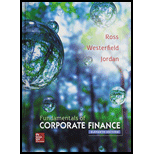
Concept explainers
a)
Case summary:
This case discusses the circumstances that have to be encountered by a mortgage business broker. Person JC is a new mortgage business broker and her cousin MK has approached to have a mortgage for a house that is being built. The house construction has to be completed in three months and he needs the mortgage at the completion stage of the house. The requirement of person MK is 25-year, $400,000 fixed-rate mortgage to be repaid on a monthly basis.
Person JC has agreed to lend the money at the present market rate of 6%. Due to having insufficient fund with person JC, he has approached person IT, the president of IT Insurance Corporation for purchasing mortgage. Person IT has agreed the demand of person JC except on the price of the mortgage because he is unwilling to set a price on the mortgage loan, but rather he does agree in writing to purchase the mortgage at the market rate in three months. Moreover, the market has Treasury bond futures contract with a face value of $100,000 per contract at a maturity of three months.
Characters in the case:
- Person JC: Owner of the mortgage business
- Person MK: Customer of JC
- Person IT: President of IT Insurance Corporation
- Company IT: An insurance corporation
To determine: Mortgage amount to be paid by person IT if the interest rate rises to 7%.
b)
To discuss: Effect of interest rate rise over the value of Treasury bond futures.
Want to see the full answer?
Check out a sample textbook solution
Chapter 23 Solutions
Fundamentals of Corporate Finance with Connect Access Card
- critically discuss the hockey stick model of a start-up financing. In your response, explain the model and discibe its three main stages, highlighting the key characteristics of each stage in terms of growth, risk, and funding expectations.arrow_forwardSolve this problem please .arrow_forwardSolve this finance question.arrow_forward
- solve this question.Pat and Chris have identical interest-bearing bank accounts that pay them $15 interest per year. Pat leaves the $15 in the account each year, while Chris takes the $15 home to a jar and never spends any of it. After five years, who has more money?arrow_forwardWhat is corporate finance? explain all thingsarrow_forwardSolve this finance problem.arrow_forward
- Principles of Accounting Volume 1AccountingISBN:9781947172685Author:OpenStaxPublisher:OpenStax College
 Intermediate Financial Management (MindTap Course...FinanceISBN:9781337395083Author:Eugene F. Brigham, Phillip R. DavesPublisher:Cengage Learning
Intermediate Financial Management (MindTap Course...FinanceISBN:9781337395083Author:Eugene F. Brigham, Phillip R. DavesPublisher:Cengage Learning


